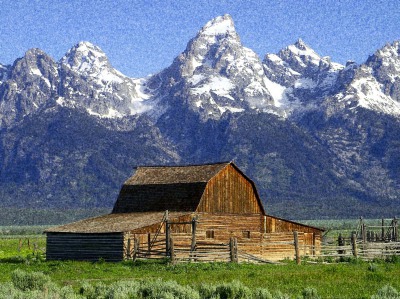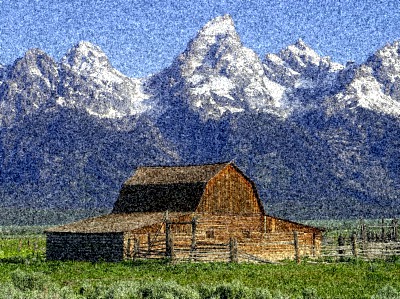 Fred's ImageMagick Scripts
Fred's ImageMagick Scripts
Copyright © Fred Weinhaus My scripts are available free of charge for non-commercial (non-profit) use, ONLY. For use of my scripts in commercial (for-profit) environments or non-free applications, please contact me (Fred Weinhaus) for licensing arrangements. My email address is fmw at alink dot net. If you: 1) redistribute, 2) incorporate any of these scripts into other free applications or 3) reprogram them in another scripting language, then you must contact me for permission, especially if the result might be used in a commercial or for-profit environment. Usage, whether stated or not in the script, is restricted to the above licensing arrangements. It is also subject, in a subordinate manner, to the ImageMagick license, which can be found at: http://www.imagemagick.org/script/license.php Please read the Pointers For Use on my home page to properly install and customize my scripts. |
|
Applies film grain noise to an image. |
last modified: December 15, 2018
|
USAGE: filmgrain [-n noise] [-a amount1] [-A amount2] [-d density1]
-n ... noise ...... type of noise; any valid IM noise, except random; PURPOSE: To apply film grain noise to an image. DESCRIPTION: FILMGRAIN applies film grain noise to an image. One or two layers of noise may be applied. The amount and density of each layer of noise may be controlled separately as well as the compose methods. ARGUMENTS: -n noise ... NOISE is the type of noise; any valid IM noise, except random is allowed. The default=gaussian. Most of the noise types look rather similar on first glance with the appropriate amounts. Isolated noise can be simulated by reducing the density on the other noise types. Actual film grain is closestly approximated by the gaussian noise. -a amount1 ... AMOUNT1 is the amount of the first layer of noise. Value are integers>=0. The default=100. -A amount2 ... AMOUNT2 is the amount of the second layer of noise. Value are integers>=0. The default=50. -d density1 ... DENSITY1 is the density (spacing) of the first layer of noise. Values are 0<=integers<=100. The default=100. -D densityD ... DENSITY2 is the density (spacing) of the second layer of noise. Values are 0<=integers<=100. The default=100. -s seed1 ... SEED1 is the seed value for the first layer of noise. Values are integers>=0. The default=100. -S seed2 ... SEED2 is the seed value for the second layer of noise. Values are integers>=0. The default=200. -c compose1 ... COMPOSE1 is the compose method for the first layer of noise. Choices are: overlay, softlight, hardlight, linearlight and vividlight. The default=overlay. -C compose2 ... COMPOSE2 is the compose method for the second layer of noise. Choices are: overlay, softlight, hardlight, linearlight and vividlight. The default=overlay. -b blur ... BLUR amount to soften noise. Values are floats>=0. The default=0.5. -m monotone ... MONOTONE indicates to use monotone (grayscale) noise rather than color noise. Choices are: yes or no.
REFERENCES: CAVEAT: No guarantee that this script will work on all platforms, nor that trapping of inconsistent parameters is complete and foolproof. Use At Your Own Risk. |
|
Example 1 - Default |
|
|
Original |
Arguments: |

|

|
|
Example 2 - Variation In Second Layer Noise Amount |
|
|
Original |
|

|
|
|
Arguments: |
Arguments: |

|

|
|
Example 3 - Variation In First Layer Density |
|
|
Original |
|

|
|
|
Arguments: |
Arguments: |

|

|
|
Arguments: |
Arguments: |

|

|
|
Example 4 - Variation In First Layer Compose Method |
|
|
Original |
|

|
|
|
Arguments: |
Arguments: |

|

|
|
Arguments: |
Arguments: |

|

|
|
Arguments: |
|

|
|
|
Example 5 - Variation In First Layer Noise Type |
|
|
Original |
|

|
|
|
Arguments: |
Arguments: |

|

|
|
Arguments: |
Arguments: |

|

|
|
Arguments: |
Arguments: |

|

|
|
Example 6 - Grayscale vs Color Noise |
|
|
Original |
|

|
|
|
Arguments: |
Arguments: |

|

|
|
What the script does is as follows:
This is equivalent to the following IM commands
|